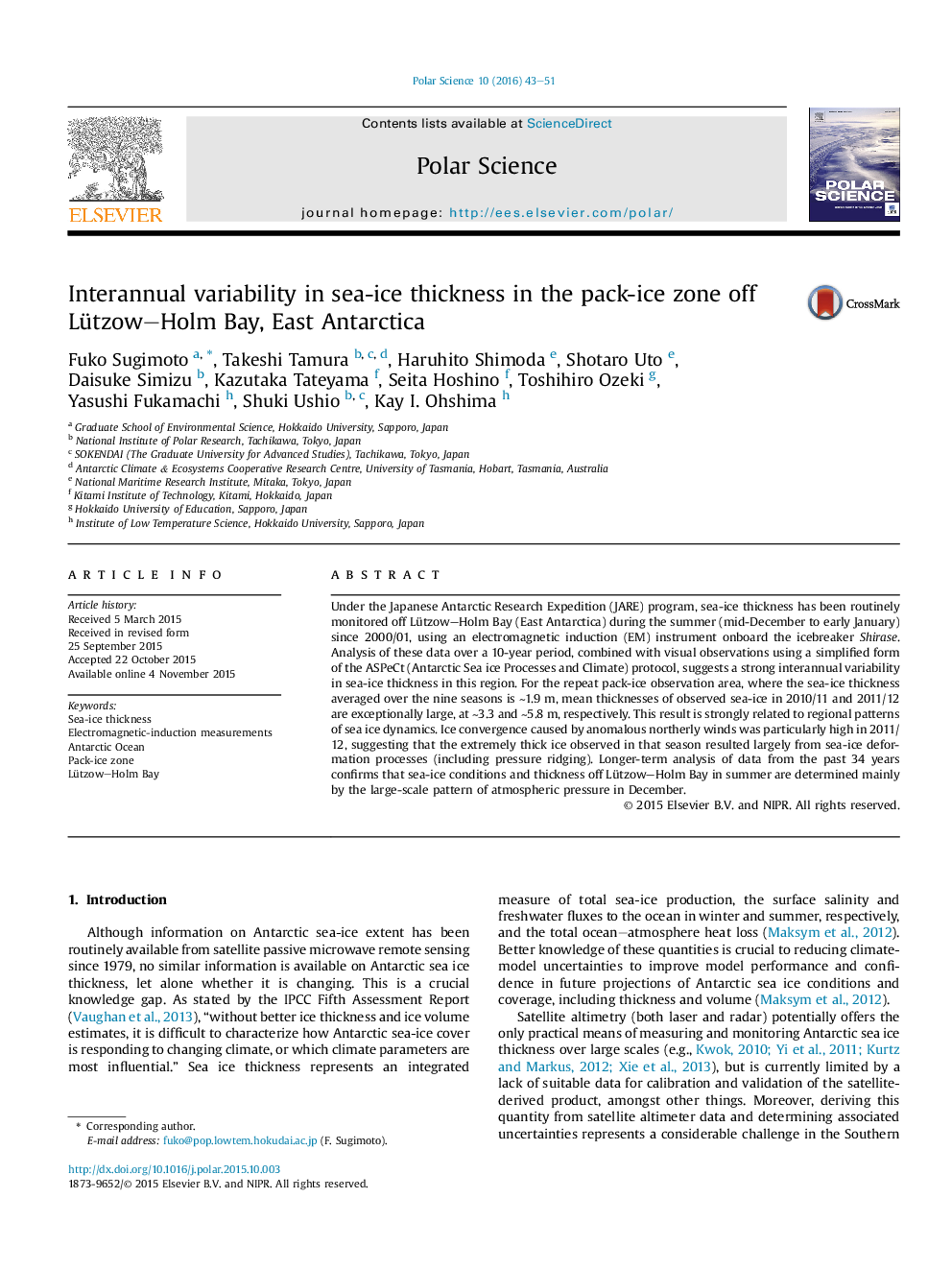| کد مقاله | کد نشریه | سال انتشار | مقاله انگلیسی | نسخه تمام متن |
|---|---|---|---|---|
| 4683188 | 1349283 | 2016 | 9 صفحه PDF | دانلود رایگان |

• Interannual variability in sea-ice thickness off Lützow–Holm Bay is presented.
• Mean thickness of sea-ice were anomalously large in 2010/11 and 2011/12.
• Anomalously thick ice is caused by strong sea-ice convergence by northerly wind.
• Sea-ice thickness in this region in summer is determined by atmospheric pattern.
Under the Japanese Antarctic Research Expedition (JARE) program, sea-ice thickness has been routinely monitored off Lützow–Holm Bay (East Antarctica) during the summer (mid-December to early January) since 2000/01, using an electromagnetic induction (EM) instrument onboard the icebreaker Shirase. Analysis of these data over a 10-year period, combined with visual observations using a simplified form of the ASPeCt (Antarctic Sea ice Processes and Climate) protocol, suggests a strong interannual variability in sea-ice thickness in this region. For the repeat pack-ice observation area, where the sea-ice thickness averaged over the nine seasons is ∼1.9 m, mean thicknesses of observed sea-ice in 2010/11 and 2011/12 are exceptionally large, at ∼3.3 and ∼5.8 m, respectively. This result is strongly related to regional patterns of sea ice dynamics. Ice convergence caused by anomalous northerly winds was particularly high in 2011/12, suggesting that the extremely thick ice observed in that season resulted largely from sea-ice deformation processes (including pressure ridging). Longer-term analysis of data from the past 34 years confirms that sea-ice conditions and thickness off Lützow–Holm Bay in summer are determined mainly by the large-scale pattern of atmospheric pressure in December.
Journal: Polar Science - Volume 10, Issue 1, March 2016, Pages 43–51